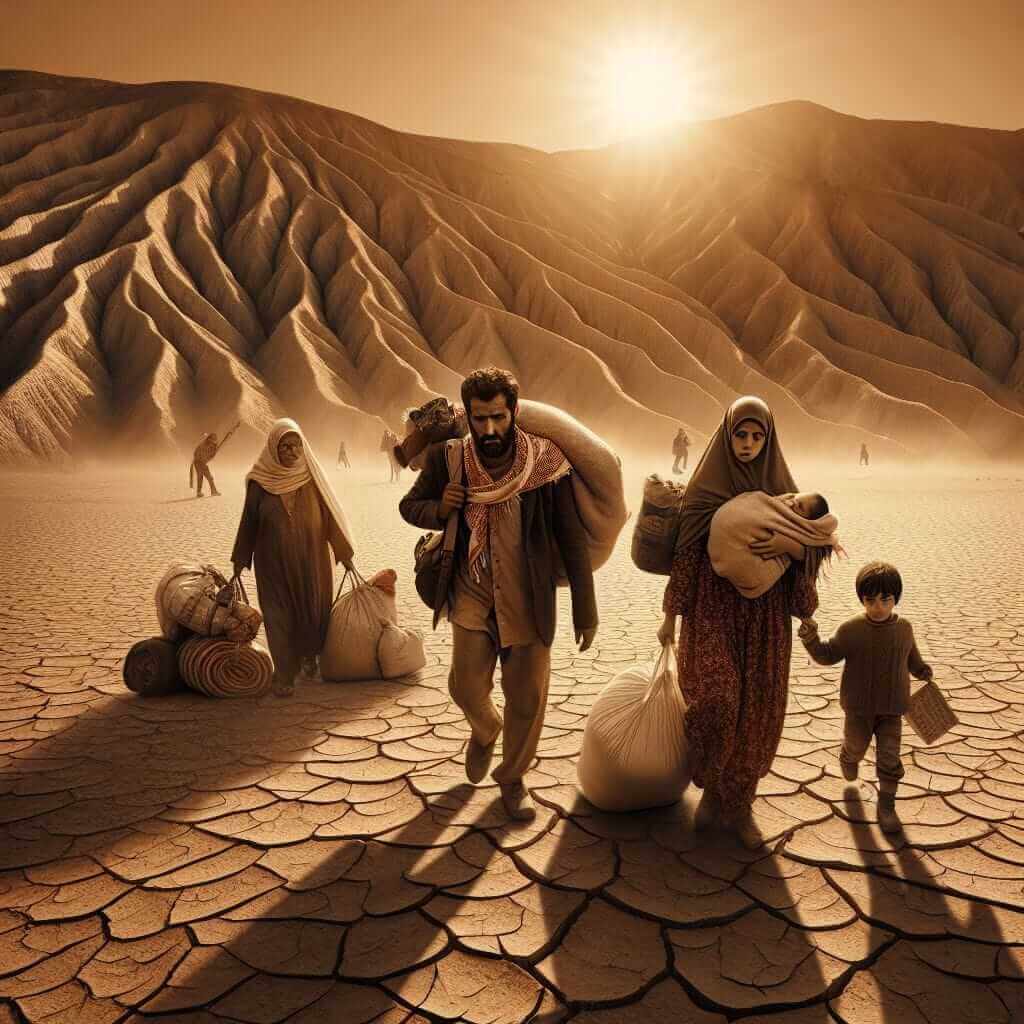Climate change is an increasingly pressing global issue with far-reaching consequences, including its impact on migration patterns. This topic frequently appears in IELTS Writing Task 2, requiring test-takers to demonstrate their understanding of the issue and their ability to articulate their thoughts in a well-structured essay. This article explores the connection between climate change and migration, provides relevant vocabulary, and offers a sample essay to guide your preparation for the IELTS exam.
IELTS Essay Question
Many people are being forced to migrate due to the effects of climate change. What are the main reasons for this? What measures can be taken to address this issue?
Analysis of the Question
This question presents a two-part problem related to climate-induced migration:
- Identifying the reasons: You need to explain why climate change leads to displacement.
- Proposing solutions: You need to suggest measures to tackle this growing concern.
Sample Essay
Climate change is undeniably one of the most pressing challenges of our time, and its impact on human migration patterns is becoming increasingly evident. As global temperatures rise and extreme weather events become more frequent, people around the world are being forced to leave their homes in search of safety and security. This essay will examine the primary reasons behind this phenomenon and explore potential solutions to mitigate this growing crisis.
One of the most significant drivers of climate-induced migration is the increase in the frequency and intensity of natural disasters. Rising sea levels, for example, are threatening to submerge entire island nations and coastal communities, displacing millions of people. Similarly, prolonged droughts and desertification, exacerbated by climate change, are leading to crop failures and water scarcity, forcing rural communities to abandon their land and migrate to urban areas or other countries.

Furthermore, the degradation of ecosystems and the loss of biodiversity due to climate change can undermine livelihoods and exacerbate food insecurity, particularly in developing countries. This can trigger large-scale displacement as people are left with no choice but to seek better living conditions elsewhere.
Addressing this multifaceted challenge requires a multi-pronged approach. Firstly, international cooperation is crucial to reduce greenhouse gas emissions and mitigate the effects of climate change. The Paris Agreement, with its goal of limiting global warming to well below 2 degrees Celsius, represents a significant step in this direction. However, stronger commitments and accelerated actions are urgently needed.
Secondly, investing in climate change adaptation measures is essential to help vulnerable communities cope with the impacts of climate change. This includes building resilient infrastructure, developing drought-resistant crops, and improving water management systems. Empowering communities with the knowledge and resources to adapt to changing environmental conditions is crucial to preventing displacement.
Finally, the international community must establish legal frameworks and support mechanisms to protect the rights of climate migrants. This includes recognizing climate displacement as a legitimate reason for seeking asylum and providing financial and logistical assistance to countries bearing the brunt of climate-induced migration.
In conclusion, climate change is a major driver of displacement, forcing millions to leave their homes due to rising sea levels, extreme weather events, and resource scarcity. Tackling this challenge necessitates global cooperation on emission reduction, investment in adaptation strategies, and the establishment of protective frameworks for climate migrants. Failing to act decisively will result in a humanitarian crisis of unprecedented proportions. (Word count: 378)
Writing Tips
- Use Topic-Specific Vocabulary: Incorporate terms like “climate refugees,” “sea-level rise,” “desertification,” and “mitigation strategies.”
- Provide Clear Examples: Support your points with real-world examples of climate migration, like the displacement caused by droughts in the Sahel region of Africa.
- Present a Balanced View: While focusing on the negative impacts, consider mentioning potential benefits of planned relocation in some cases.
- Use Cohesive Devices: Employ transition words and phrases like “furthermore,” “in addition,” “on the other hand,” and “to conclude” to ensure smooth transitions between ideas.
Vocabulary
- Climate refugee (noun): /ˈklaɪmət ˈrɛfjuːdʒiː/ – A person displaced by climate change impacts
- Sea-level rise (noun): /ˈsiː ˈlɛvəl raɪz/ – The increase in the average level of the ocean
- Desertification (noun): /dɪˌzɜːrtɪfɪˈkeɪʃən/ – The process of land becoming desert-like due to drought
- Mitigation (noun): /ˌmɪtɪˈɡeɪʃən/ – Actions taken to reduce the severity of something
- Adaptation (noun): /ˌædæpˈteɪʃən/ – Adjusting to new or changing conditions
Conclusion
The impact of climate change on migration patterns is a complex issue with profound implications. By understanding the key drivers, solutions, and vocabulary associated with this topic, you can effectively demonstrate your knowledge and writing skills in the IELTS Writing Task 2. Remember to practice writing similar essays to improve your proficiency and confidence for the exam.